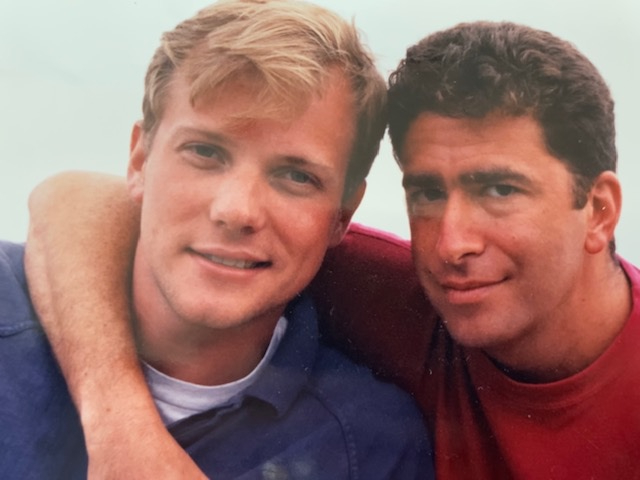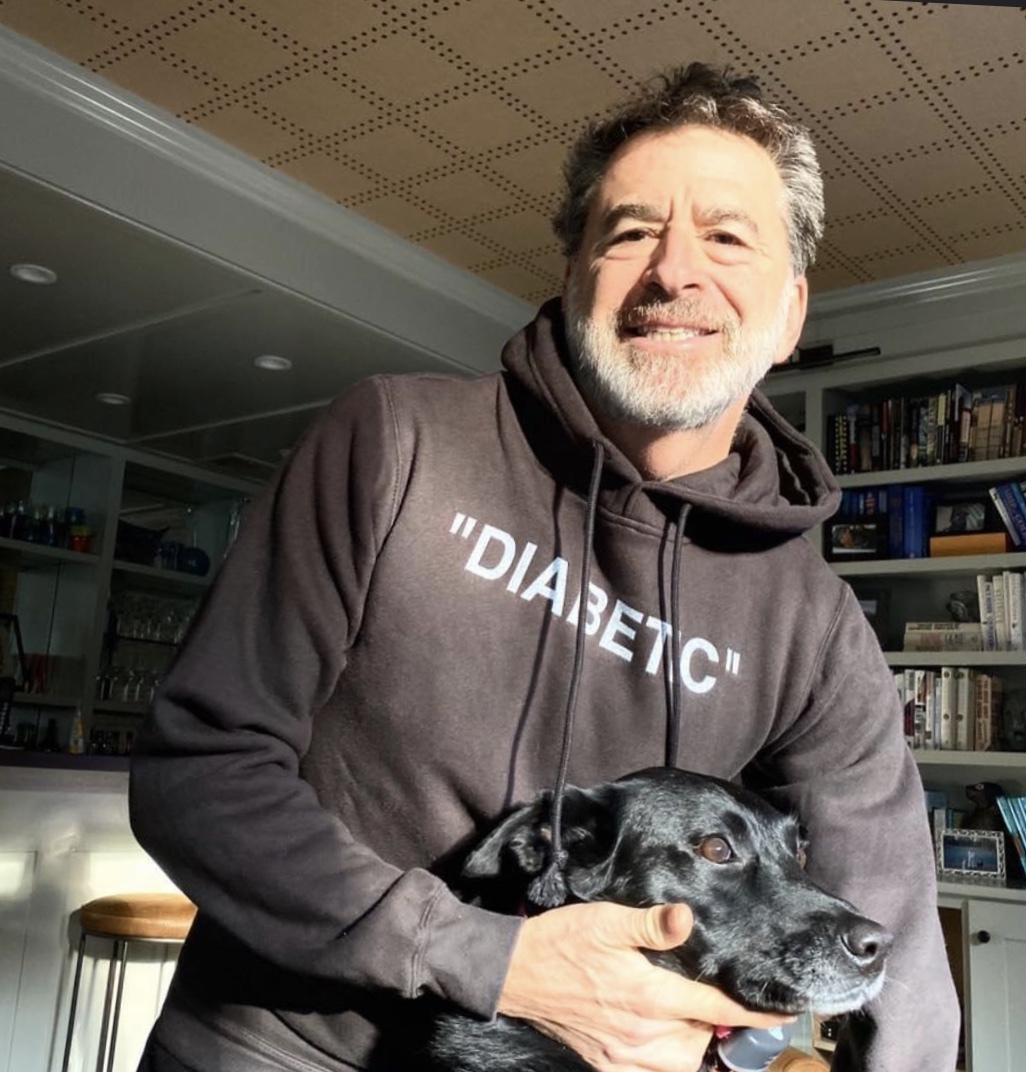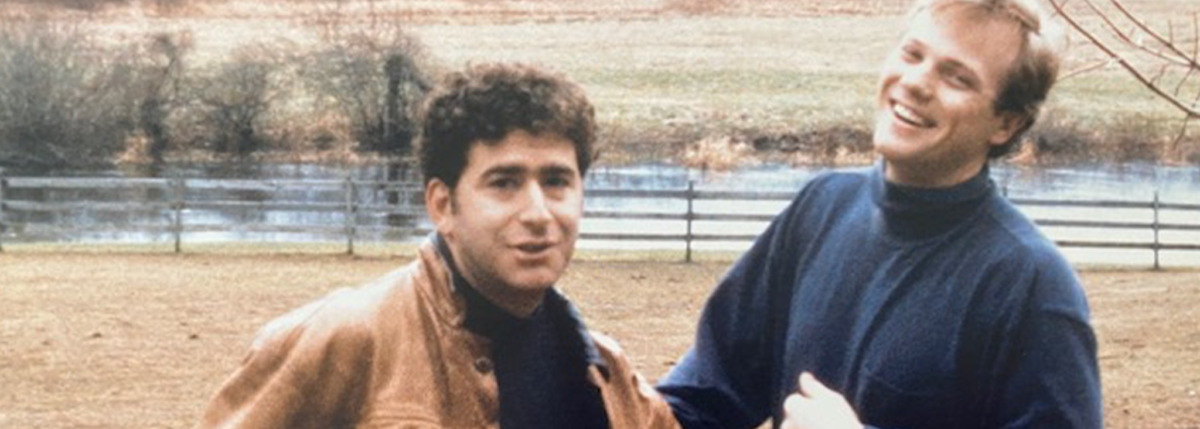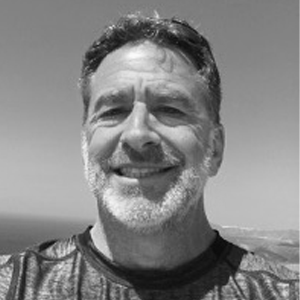How Coming Out Helped Me Accept My T1D Diagnosis
Editor’s Note: Are you an adult navigating a recent type 1 diabetes diagnosis? Our partners at JDRF created the free No Limits Adult Care Kit just for you—packed with information and tools to educate, support and inspire newly diagnosed adults with T1D. Request yours here.
I’d like to tell you a bit about my journey. First, you have to understand something about me: as a lifelong hypochondriac, I always only ‘thought’ I got diseases. So imagine my surprise being diagnosed as a person with diabetes not once, but twice. The first time was in 2014, right after my 55th birthday when I was diagnosed as type 2. Then two years later in 2016, I was re-diagnosed as a type 1.
I’ll never forget sitting in the office of my new endocrinologist when he leaned over his desk and said those words that I feared. “You are a type 1 diabetic.”
As he pulled out two boxes he said:
“You inject yourself with this every morning, and you inject yourself with this at every meal.”
I asked “For how long?”, thinking he’d say for a week, a month… And he looked at me straight and said …“for the rest of your life!” That’s when the gravity of being type 1 began to sink in.
What I eventually came to understand is that taking my daily shots would be the easiest part of managing this disease.
My New Normal
I was scared to be alone in the early days, and not sure if I would wake up in the morning. After two years of finger pricks, I finally started to use technology (reluctantly) to help manage my blood glucose numbers. I remember my first night wearing my Dexcom sensor—which would wake me up if I went low overnight. I explained to my husband Patrick that we were in this together, and explained how when a sensor goes off I may need his help, especially if I’m experiencing a low, scared that I would sleep thru my alarm. Sure enough, that first night, my sensor went off and I hear Patrick wake up and say “ALEXA OFF!” and go back to sleep.
But in all seriousness, my husband has been incredible, and he is just one of the many people whose support has helped me successfully manage living with type 1 diabetes.
I struggled those first few weeks after diagnosis. I would go out with friends, unable to tell them the truth about my diagnosis, and hiding the fact that I was taking insulin. I felt isolated, alone, scared. I felt I had no future, no ‘normal’ life ahead of me. But these feelings were somewhat familiar, reminding me of a time, 35 years earlier, when I was struggling to come out as a gay kid.
This feeling of isolation—that once I ‘disclose’ who I am I will forever be ‘branded’ by others. I didn’t want to be thought of as type 1, just as I didn’t want to be thought of as gay. But coming out back in the 80s taught me some powerful lessons that I would use on my diabetic journey.
Learning from the past life challenges
I left the sheltered and at times suffocating world I grew up in on Long Island and moved to NYC in 1987, to what was then the heartbeat of gay NYC, at the intersection of Christopher and Bleecker Street. Coming out gay was a real struggle for me, much of which had to do with my own insecurities and hiding who I was for years. The secrecy had taken its toll. I knew I needed to reach out to find other people ‘just like me’. Finding my community created the instant connection that crossed all barriers, and a sense of belonging and acceptance was more than comforting, it was empowering. I had no idea at the time that this process of ‘finding community’ would provide the building blocks that would get me through a life altering diagnosis to come decades later.

The 80s were a unique time in the struggle for LGBT rights (Q was not part of the acronym then). It was before the internet, before Instagram and Facebook, which meant finding others would be easier in the big city then it was back in the suburbs—all IRL-in real life. We found a collective strength in ‘community’ that we had to build from the ground up. It was a time when gay culture and awareness was just beginning to evolve in a more public way. I was also living in ground zero of the AIDS crisis in America—where our community literally had to fight for our lives. As our friends and loved ones died, we shifted our community from connection to action. And it was in those very dark days, I understood there was strength in numbers, that organizing began on the streets and there was power in the ballot box. We could change the world by being open with who we are, by educating our friends and family, to engage and not isolate. In the process, I learned how to be an advocate—and that I could help raise awareness only by becoming visible first.
Ultimately, through my connection with others and in finding my own voice, I learned to be proud of myself and comfortable in my own skin. I learned as a gay young adult, the only limitation I had was myself. It took me a while, and so many were part of that journey.
Twenty five years later, being faced with a new challenge of my cI drew on the strength of the lessons I learned, and eventually it became clear to me that I would need to come out once again. I knew I needed to find my type 1 diabetes (T1D) community, and embrace being a person with type 1 diabetes.
Finding myself again
Diabetes is often referred to as an invisible disease. I hear, “…but you don’t look sick”, just like I heard, “but you don’t look gay”.
I started searching online—I guess where everything starts today. I found an amazing resource in Beyond Type 1, an online community over a million strong. I read an article about yoga and type 1, written by a type 1 Health Coach Lauren Bongiorno. Lauren helped me understand that I can live a happy and healthy life, and helped me take control of managing my disease.
Lauren connected me to Erik Douds, a global adventurer who was biking and hiking around the world. I realized if Erik was able to bike 3000 miles across America, (with only two weeks of training I might add)—I should be able to manage to Bike around the Hamptons.
Both Erik and Lauren taught me how important it is to be able to take care of myself—and to have the confidence to be able to do that. And they both had my back. They opened my eyes to the power of this community. A community that has since connected me to so many—Susan, Rob, Jillian, Eoin, Austin, Jesee, Sarah, Qiana, Mia, Luke, Danielle, Matt, Bill, Alison, Thom, Dom, Peggy, Sara, Annalisa, Rachel, Raquel, Evan, Nate, David, Sam, Arron and so many more. Proud T1Ds and allies.
Once again, it was thru this community that I learned as a person with type 1 diabetes the only limitation I had… was myself.
When it comes to advocacy and education today, I lean on those early years coming out as a gay kid. Only by being visible can I affect the change I seek. I am passionate about talking to others about having type 1 diabetes, injecting in public, proudly wearing my Dexcom and identifying myself as a T1D (Yes I have the Rob Howe Diabetic Hoodie). I love connecting, learning and sharing—and being part of a community that is stronger than any individual voice.

I now recognize that we need allies in our fight as T1Ds, and that our numbers are too small to move the needle ourselves. We need our voices to be heard, and that requires our non-T1D friends, family and work associates to help amplify our voices as a community in need—of acceptance, of understanding, of healthcare for all and for the cure we deserve.
My story is only one story
Today, 1.45 million people in America are living with type 1 diabetes, and every day an additional 100+ people are diagnosed—at least 64,000 people per year —it’s a staggering number of lives that are changed forever.
For so many, our lives are filled with frustration, burden and struggle. We need insulin every day just to stay alive. Insulin is a life-sustaining drug, but it is not a cure. We need a cure. And until that day comes, we need to help each other live the best life possible. It is our responsibility, to ourselves and to the community we created and are part of.
As for my husband Patrick—when we exchanged our vows, we said “for better or worse”. Well, my goal is to somehow make this experience part of the ‘better’. His support since day one has been unconditional. He lives each day as the life of a type 1 partner—watching over me, working with me, making sure I am safe and loved.
Finally, I recall asking my doctor a question that many of us asked when we’re faced with a chronic illness or life-changing disease “why me?” My doctor said, “Peter, it’s just your thing.”
At that moment, I thought I was alone and isolated in my battle with my new latent autoimmune diabetes in adults (LADA) diagnosis. But the reality was once I learned to open myself up to others and to embrace community—a lesson I learned so many years earlier, it was no longer ‘my thing’. Today, six years into my new life, I choose to make it a positive experience: to support those who struggle, to be supported, to learn, to help create and foster community and to do all I can to help find a cure.





